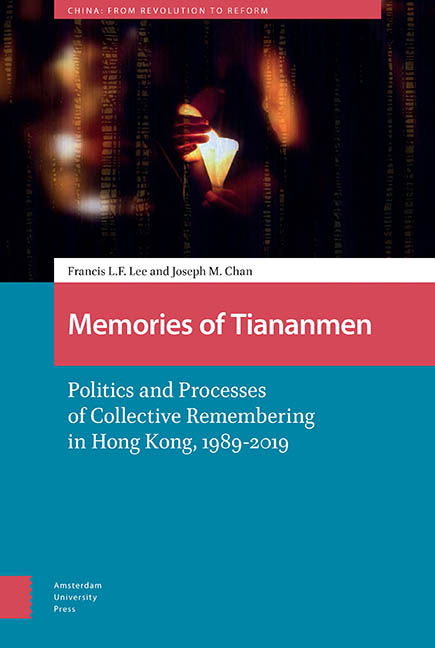Book contents
- Frontmatter
- Contents
- List of Figures and Tables
- Acknowledgments
- List of Abbreviations
- 1 Introduction
- 2 Memory Formation and the Valorization of Commemoration
- 3 Memory Mobilization
- 4 Intergenerational Memory Transmission
- 5 The Struggle for Memory Institutionalization
- 6 The Challenge of Localism and Memory Repair
- 7 Changing Attitudes toward Tiananmen?
- 8 Digital Media and Memory Balkanization
- 9 Conclusion
- Epilogue
- Appendix
- References
- Index
3 - Memory Mobilization
Published online by Cambridge University Press: 16 July 2022
- Frontmatter
- Contents
- List of Figures and Tables
- Acknowledgments
- List of Abbreviations
- 1 Introduction
- 2 Memory Formation and the Valorization of Commemoration
- 3 Memory Mobilization
- 4 Intergenerational Memory Transmission
- 5 The Struggle for Memory Institutionalization
- 6 The Challenge of Localism and Memory Repair
- 7 Changing Attitudes toward Tiananmen?
- 8 Digital Media and Memory Balkanization
- 9 Conclusion
- Epilogue
- Appendix
- References
- Index
Summary
Abstract
Chapter 3 analyzes the annual memory mobilization cycle, led by the Hong Kong Alliance in Support of Patriotic Democratic Movements of China and supported by the news media, surrounding the annual candlelight vigil on June 4. It illustrates how movement strategies and media discourses generate an atmosphere of remembering in the society. The chapter also draws upon population survey data to illustrate to what extent the Tiananmen Incident was indeed regarded as an important historical event by Hong Kong citizens, and how media and communication activities during memory mobilization led people to recall the Incident.
Keywords: memory mobilization cycle, atmosphere of remembering, communication effects on event recall
In reconstructing how collective remembering of Tiananmen in Hong Kong was valorized, stabilized, and defended over a period of two decades, Chapter 2 adopted a linear conception of time. Although the process of collective memory formation and contestation was by no means straightforward, time flowed from the 1990s to the 2010s. However, communication, mobilization, and commemoration activities related to Tiananmen were also embedded in the cyclical temporal structure of the yearly calendar. Other than the occasional unexpected news stories related to the Tiananmen Incident, such as the publication of the Tiananmen Papersin January 2001 and the death of Zhao Ziyang in January 2005, other Tiananmen Incident-related news stories and activities typically appeared in the weeks before the June 4 vigil each year.
The June 4 candlelight vigil itself is undoubtedly one of the most important political rituals in Hong Kong. Following Kertzer (1986), ritual can be understood broadly as symbolic behavior that is socially standardized and repetitive. It carves out a sacred realm that is differentiated from mundane reality. It employs symbols that condense meanings and produce multivocality and ambiguity. It allows people to experience a sense of community and reconfirm their social identity (Abeles, 1988; Papadakis, 2003).
The repetitiveness or even redundancy of ritual is central to its capability of “channeling emotion, guiding cognition, and organizing social groups” (Kertzer, 1986: 9). In fact, the “program” of the June 4 vigil in Hong Kong has taken up its basic shape in the mid-1990s.
- Type
- Chapter
- Information
- Memories of TiananmenPolitics and Processes of Collective Remembering in Hong Kong, 1989–2019, pp. 85 - 122Publisher: Amsterdam University PressPrint publication year: 2021



